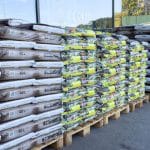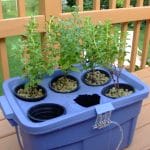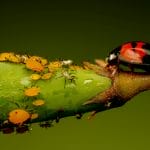Butterflies in the Garden: Why They Visit, How They Live, and How to Invite More
Flowers Good Bugs How To's
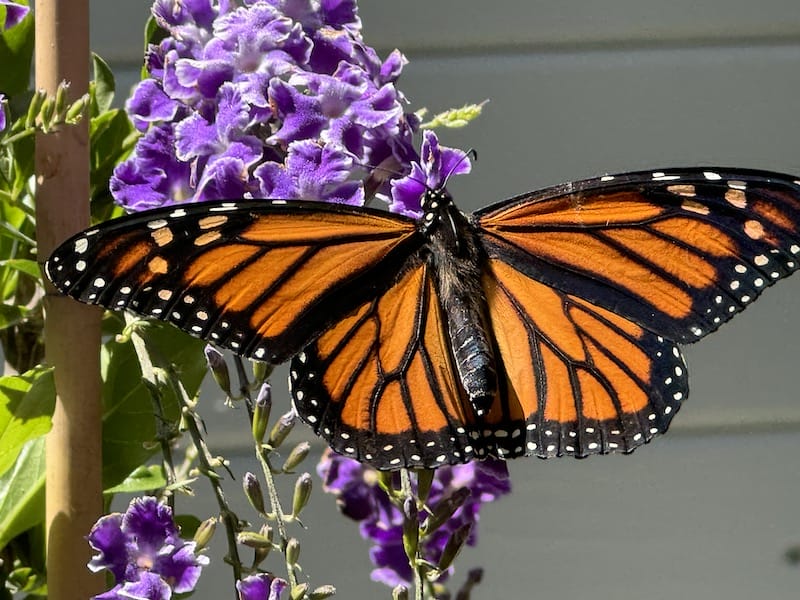
How to Bring More Butterflies Into Your Garden
Some mornings in the garden, I’ll catch myself standing still with dirt on my hands, staring at a butterfly that’s drifted in like it owns the place. It doesn’t matter how many times it happens — swallowtail, monarch, even one of those little cabbage whites — it always feels like a small gift.
So, if you’ve ever thought, “How do I get more butterflies in my yard?” or wondered how on earth something so delicate can travel thousands of miles, let’s talk through it. I’ve learned plenty by trial, error, and staring longer than most people would admit at milkweed plants.
How Butterflies Eat (and Why They’re Picky About Flowers)
Butterflies don’t chew. They don’t slurp up juice with a tongue like a hummingbird. They drink with a straw. That curled-up tube you’ll notice when one lands is called a proboscis, and it works like rolling out the garden hose.
They’re after nectar — the sugary fuel that keeps them going — but here’s the trick: not all flowers make it easy for them. Some blooms have short, shallow nectar cups; others are too deep. That’s why you’ll usually catch butterflies fussing over coneflowers or zinnias, while the big fancy hybrid roses get ignored. And now and then, they skip flowers altogether. Ever notice one sitting on wet soil, a muddy patch, or even a mushy piece of fruit left out too long? They’re not being lazy — they’re “puddling,” drinking up salts and minerals they need. Think of it like their version of a sports drink after a workout.
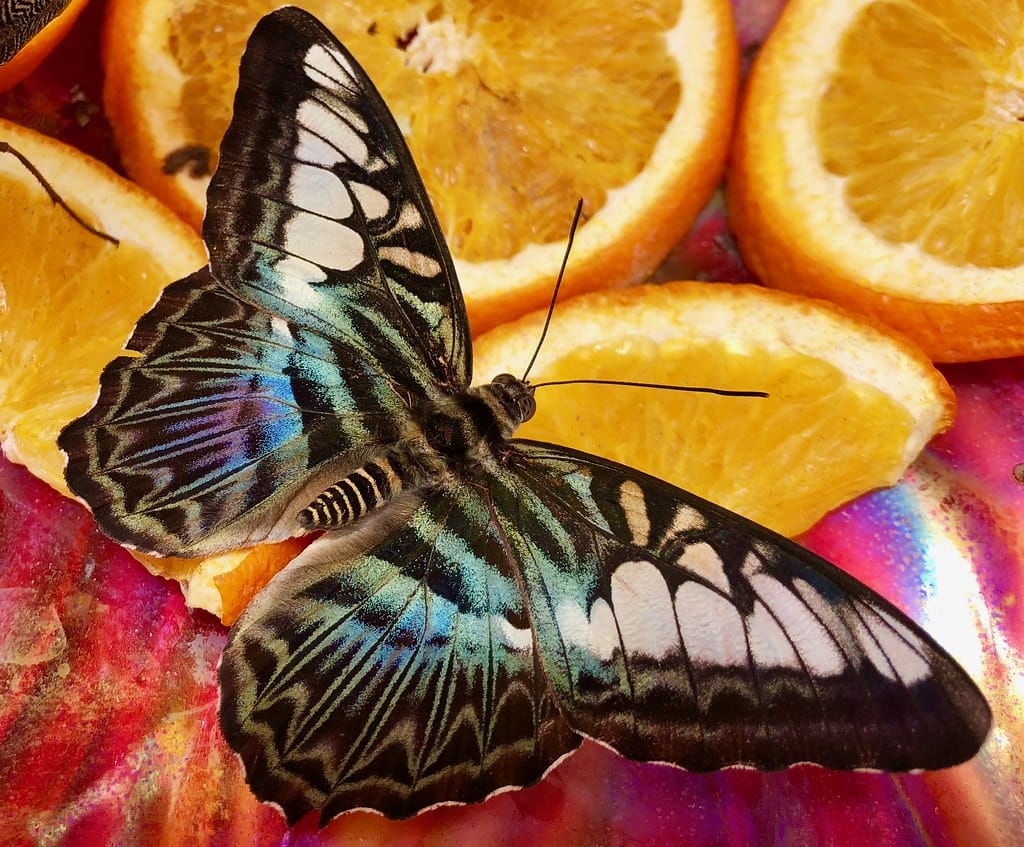
Fruit for Butterflies
Butterflies don’t just sip flowers — they’ll go for fruit too. Oranges, bananas, watermelon, and even apples if they’re soft and juicy. Just slice it open and set it on a dish or flat rock in a sunny, sheltered spot.
Swap it out every couple of days before it turns into a fruit fly mess. I’ve seen red admirals, mourning cloaks, and even swallowtails crowd in. It’s an easy way to draw them close — like offering them a sweet little snack bar in your yard.
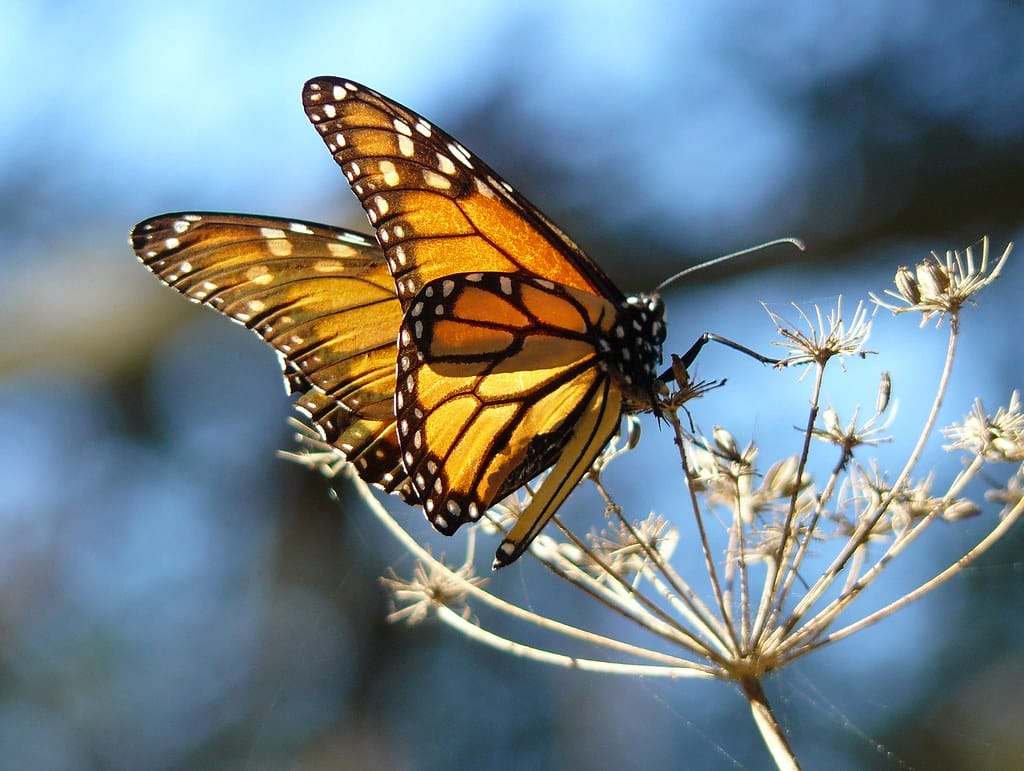
Favorite Garden Plants (and the Double Life of Host vs. Nectar)
If you want to roll out the welcome mat, a few plants work like a flashing “Vacancy” sign for butterflies:
- Milkweed – Essential for monarchs. The adults sip the nectar, and their caterpillars feed only on its leaves. No milkweed, no monarchs.
- Zinnias – An easy, colorful magnet. They bloom for ages, attracting all kinds of butterflies.
- Coneflowers (Echinacea) – Sturdy and reliable, they offer both nectar and perching space.
- Lantana – Bright clusters of flowers that attract swallowtails and painted ladies.
- Joe-Pye weed, asters, and goldenrod – Lifesavers in late summer and fall, fueling migrations.
- Herbs in bloom – Oregano, mint, thyme — if you let them flower, pollinators flock in.
Now here’s where many gardeners miss the boat: nectar plants are great, but without host plants, you won’t have butterflies sticking around to raise their young. Each species has a favorite. Black swallowtails lay eggs on dill, fennel, and parsley. Monarchs only use milkweed. Gulf fritillaries love passionflower vines.
So if your zinnias look busy but you never find caterpillars munching away, that’s why. It’s like offering dessert but forgetting the main course.
How Long Do They Stick Around?
The answer might surprise you. Most adult butterflies live just two to four weeks. That’s it. A quick season of sipping nectar, finding mates, laying eggs, and saying goodbye.
But then there are exceptions. Mourning cloak butterflies can tough it out through winter, living up to nine months. And monarchs — well, they’re in a class of their own. The late-summer generation, sometimes called the “super generation,” can live up to eight months so they can make their incredible migration south.
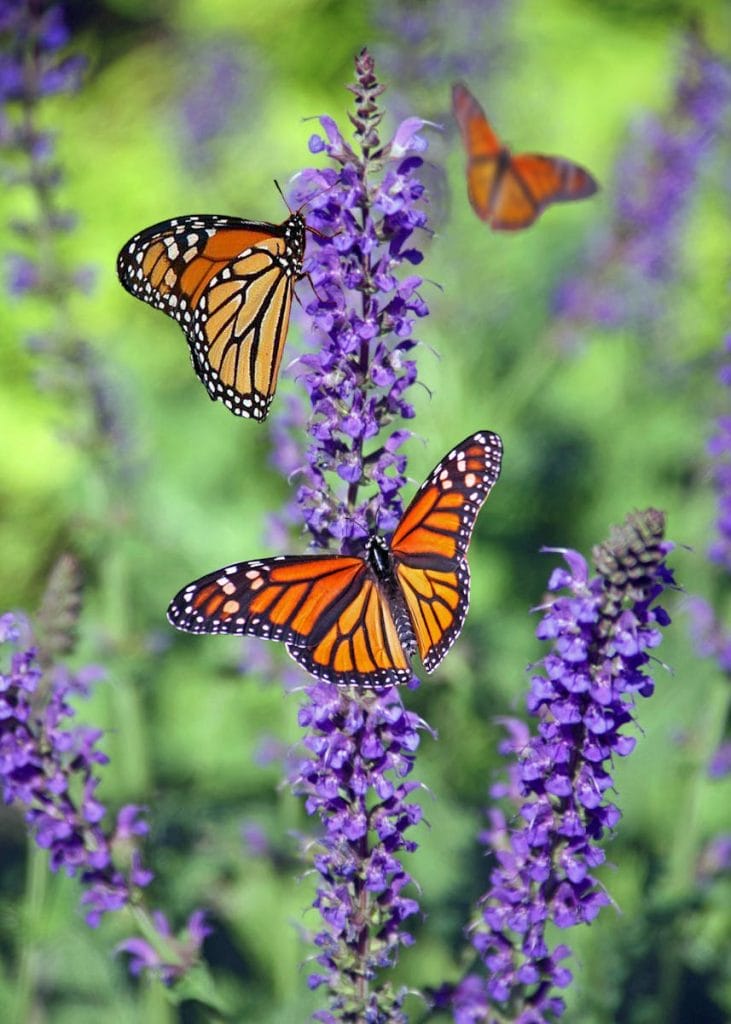
Monarchs: The Great Travelers
If you’ve ever doubted nature’s ability to pull off miracles, look at monarch migration. These paper-thin creatures travel as far as 3,000 miles, from the U.S. and Canada down to central Mexico.
They don’t rush. They catch wind currents, glide when they can, and refuel on late-blooming flowers — goldenrod, asters, even garden zinnias. And here’s the kicker: the monarchs that leave in the fall are not the same ones that come back. It’s a relay race across generations.
The ones that overwinter in Mexico spend months clustered in fir forests, covering whole trees like living ornaments. Come spring, they mate and head north, laying eggs along the way. Their children, and their children’s children, keep moving north until finally — four or five generations later — monarchs reach the northern states again.
Imagine if you set out on a road trip but expected your great-grandkids to pull into the driveway at the end. That’s how monarchs roll.
Where Butterflies Rest
Butterflies need downtime, too. At night, during rain, or in cold weather, they tuck themselves away. You’ll find them hanging under leaves, clinging to tall grasses, or hiding in hedges.
Monarchs take it a step further. On their migration, they roost communally, clustering by the hundreds or thousands on tree branches. From a distance, you’d swear the tree was covered in orange leaves until suddenly, the “leaves” take flight.
How to Make Your Garden Butterfly-Friendly
Here’s what usually works in most gardens:
- Plant in clusters. A big patch of zinnias or milkweed is easier to spot than one lonely plant.
- Use native plants. Local species pack more nutrition for butterflies than exotic hybrids.
- Keep flowers blooming all season. Start with early bloomers in spring, then carry it through to fall.
- Skip pesticides. Even organic sprays can knock out caterpillars.
- Offer host plants. Dill, fennel, parsley, milkweed, passionflower — whichever matches local species.
- Provide water/minerals. A shallow dish with damp sand beats a birdbath.
- Give basking spots. Flat stones in sunny spots warm them up for the day.
- Leave some wild corners. Not every inch needs to be tidy. Butterflies appreciate a little chaos.
- Fruit feeders. Overripe bananas, oranges, or melons will attract species that don’t care much for flowers.
I learned this the hard way one summer when swallowtail caterpillars stripped my parsley to nothing. My first reaction was annoyance — but then I realized, hey, that’s exactly what I planted it for. If you want butterflies, you have to share the groceries.
Fun Facts
- Butterflies taste with their feet. When a female lands on a leaf, she’s “sampling” to see if it’s a good spot to lay eggs.
- Their bright colors aren’t just for show. Monarchs are toxic from the milkweed they eat as caterpillars. Birds learn fast not to snack on them. Meanwhile, viceroy butterflies mimic monarchs’ colors as a free disguise.
- Painted ladies — ordinary in gardens — migrate, too. Some populations cross the Sahara Desert. Talk about fragile strength.
- Caterpillars eat like teenage boys. A monarch caterpillar can multiply its body weight more than 200 times before turning into a chrysalis.
Quick Butterfly FAQ
How do butterflies eat?
With a long proboscis, like a straw, that they unroll to sip nectar.
How long do butterflies live?
Most live 2–4 weeks. Monarch “super generation” butterflies can live up to 8 months.
What plants attract butterflies?
Milkweed, zinnias, coneflowers, lantana, Joe-Pye weed, goldenrod, and flowering herbs.
Where do monarchs migrate?
From the U.S. and Canada all the way to central Mexico — up to 3,000 miles.
What can I plant or do to make my garden a butterfly magnet?
Plant nectar and host plants, keep blooms going from spring through fall, avoid pesticides, and provide sunny basking spots plus shallow water for minerals.
Share this post
Table of Contents
- How to Bring More Butterflies Into Your Garden
- How Butterflies Eat (and Why They’re Picky About Flowers)
- Fruit for Butterflies
- Favorite Garden Plants (and the Double Life of Host vs. Nectar)
- How Long Do They Stick Around?
- Monarchs: The Great Travelers
- Where Butterflies Rest
- How to Make Your Garden Butterfly-Friendly
- Fun Facts
- Quick Butterfly FAQ
All categories
More From The Garden
Disclosure: This post may contain affiliate links. That means if you click and buy, The Bright Garden may earn a small commission, at no extra cost to you. We only recommend products we’ve vetted and believe will benefit our readers.



